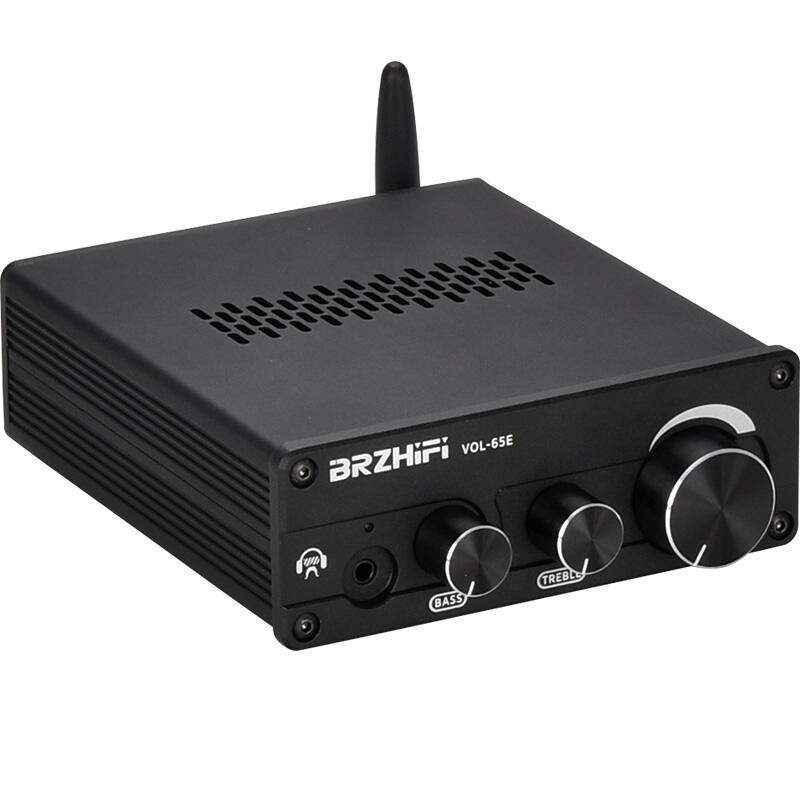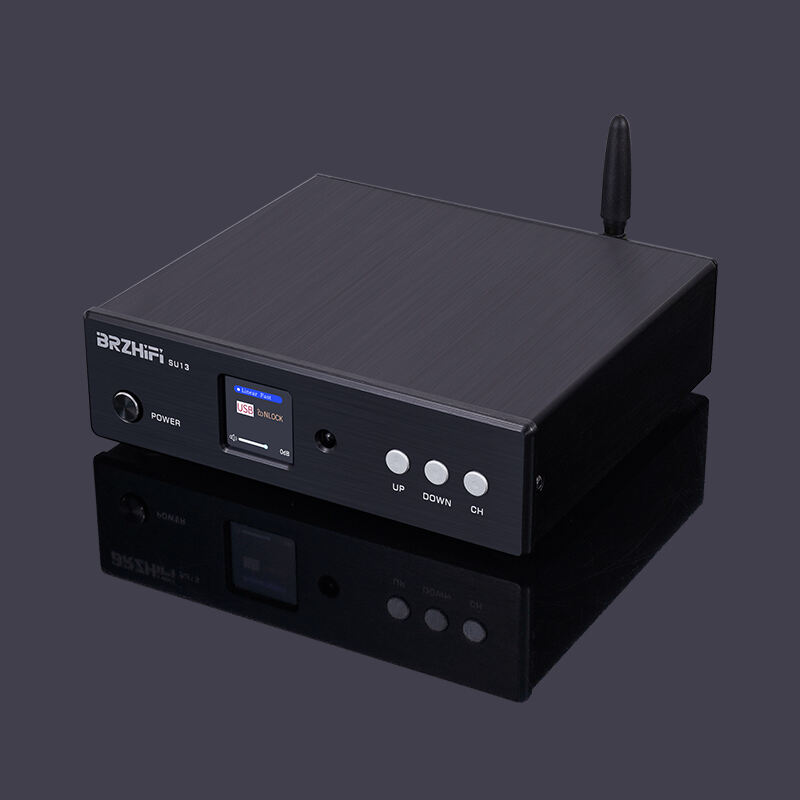Understanding the Magic Behind Premium Audio Enhancement
The world of high-fidelity audio is a realm where every subtle nuance matters, and headphone amplifiers play a pivotal role in delivering an exceptional listening experience. These sophisticated devices serve as the crucial bridge between your audio source and headphones, unleashing the full potential of your premium audio gear. Whether you're a seasoned audiophile or just beginning your journey into high-end audio, understanding headphone amplifiers is essential for achieving that elusive perfect sound.
Modern headphone amplifiers represent the culmination of decades of audio engineering excellence, offering everything from pristine signal amplification to impedance matching capabilities that can transform your listening experience. As we delve deeper into this audiophile essential, we'll explore how these devices work, what makes them indispensable, and which features truly matter when selecting the perfect amplifier for your setup.
The Technical Foundation of Headphone Amplification
Core Components and Circuit Design
At the heart of every headphone amplifier lies a sophisticated array of electronic components working in harmony. The power supply section ensures clean, consistent current delivery, while the amplification stage precisely boosts the audio signal. Premium headphone amplifiers utilize high-grade capacitors, resistors, and operational amplifiers, each carefully selected to minimize distortion and maintain signal integrity.
Modern amplifier designs often incorporate discrete components rather than integrated circuits, allowing for better control over the signal path and superior sound quality. This approach, while more expensive, results in lower noise floors and better channel separation, two crucial factors in achieving the detailed soundstage that audiophiles crave.
Power Output and Impedance Matching
One of the most critical aspects of headphone amplifiers is their ability to deliver appropriate power levels while maintaining optimal impedance matching. High-end headphones often require significant power to perform at their best, and quality amplifiers provide this power while maintaining precise control over the drivers. This results in tighter bass response, more dynamic headroom, and better overall clarity.
Different headphones have varying impedance ratings, typically ranging from 16 to 600 ohms. Premium headphone amplifiers feature multiple gain settings and output impedance options, ensuring compatibility with a wide range of headphones while maintaining optimal damping factor for superior sound control.

Essential Features in Modern Amplifier Design
Digital Connectivity Options
Today's headphone amplifiers often integrate sophisticated digital-to-analog conversion capabilities. USB inputs allow direct connection to computers, while optical and coaxial inputs provide compatibility with various digital sources. The best headphone amplifiers incorporate high-resolution DAC chips capable of processing signals up to 32-bit/384kHz and even DSD formats, ensuring compatibility with the highest quality digital audio files available.
Bluetooth connectivity has also evolved, with many premium amplifiers now supporting advanced codecs like LDAC, aptX HD, and AAC. This wireless functionality doesn't compromise on quality, offering convenience without sacrificing the high-fidelity experience that audiophiles demand.
Analog Excellence and Signal Path Purity
For purists who prefer analog sources, many high-end headphone amplifiers feature fully discrete analog circuits with minimal components in the signal path. This approach ensures the utmost transparency and maintains the natural warmth and character of analog sources. Premium volume controls, often implementing stepped attenuators or high-quality potentiometers, provide precise level adjustment without degrading sound quality.
The implementation of balanced circuits has become increasingly common, offering improved noise rejection and channel separation. XLR inputs and outputs allow for professional-grade connections, while balanced headphone outputs via 4-pin XLR connectors provide the ultimate in signal integrity for compatible headphones.
Build Quality and Design Considerations
Chassis Construction and Shielding
The physical construction of headphone amplifiers plays a crucial role in their performance. Premium models feature thick aluminum enclosures that provide excellent RF shielding and minimize vibration. Internal component layout is carefully planned to separate power supply sections from sensitive analog circuits, reducing interference and ensuring optimal performance.
Heat management is another critical consideration, with high-end amplifiers incorporating effective thermal design to maintain stable operation. Ventilation systems and heat sinks are precisely engineered to protect internal components while maintaining minimal operating temperatures for extended component life.
User Interface and Control Systems
Modern headphone amplifiers balance sophisticated functionality with intuitive operation. High-resolution displays provide detailed information about input selection, volume levels, and sampling rates, while precision-engineered controls offer tactile feedback and reliable operation. Remote control capabilities are increasingly common, allowing for convenient adjustment from listening position.
Advanced protection circuits monitor output levels and temperature, protecting both the amplifier and connected headphones from potential damage. These safety features operate transparently, never interfering with the pure audio signal path during normal operation.
Optimizing Your Listening Experience
Room Placement and Power Conditioning
While headphone amplifiers are less sensitive to room acoustics than speaker systems, proper placement still matters. Keeping the amplifier away from sources of electromagnetic interference, such as power supplies and wireless routers, helps maintain optimal performance. Some audiophiles invest in dedicated power conditioning solutions to ensure clean power delivery, further reducing potential noise and interference.
Temperature stability also affects performance, so adequate ventilation and appropriate spacing from other components are essential. Many enthusiasts prefer to position their headphone amplifiers at eye level for easy access to controls and displays while maintaining proper cooling airflow.
Cable Selection and System Matching
The quality of interconnects and power cables can significantly impact the performance of headphone amplifiers. High-quality balanced cables for source connections and premium power cords can help reduce noise and maintain signal integrity. When selecting headphone cables, considerations should include conductor material, shielding quality, and connector type to ensure optimal signal transfer.
System matching is crucial for achieving the best possible sound. The output impedance of the amplifier should complement your headphones' specifications, while power output capabilities should comfortably exceed your headphones' requirements for optimal dynamic range and control.
Frequently Asked Questions
Do I really need a separate headphone amplifier?
A dedicated headphone amplifier becomes essential when using high-impedance or power-hungry headphones, or when seeking the ultimate in sound quality. Built-in amplifiers in phones and computers often lack the power and refinement to drive premium headphones to their full potential.
How do I choose the right amplifier for my headphones?
Consider your headphones' impedance and sensitivity ratings, and choose an amplifier that provides adequate power output and appropriate impedance matching. Also factor in your source devices, preferred connection types, and whether you need additional features like DAC functionality or balanced outputs.
Will a better amplifier improve wireless headphone sound?
For wireless headphones, a separate amplifier won't improve sound quality as these headphones contain their own internal amplification. However, some headphone amplifiers include high-quality Bluetooth receivers that can improve the wireless connection quality when used as a source device.

